Mutley's Hangar
A Haven For Flight Simulation Enthusiasts!
.jpg)
For FSX / Prepar3D Published by Alabeo
Reviewed by Andrew Godden
August 2014
Introduction
The aviation world is full of successes and failures, in
many areas, and many ways. For aircraft manufacturers,
they spend a great deal of effort, resources, and finances
on the design and development of new models, and the
success of these new models is never without risk. Cessna
has not been immune to this, and for all the success they
have enjoyed with models such as the 172 'Skyhawk', they
have also been beset by failures. The development concept
behind the 177 'Cardinal' was solid, however, by
comparison, its sales success was an abject failure.
Over the years, there have only been a few models of the
Cessna 177 'Cardinal', both payware and freeware,
developed for Microsoft Flight Simulator. Alabeo have
demonstrated a penchant for developing the less common
aircraft and the Cessna 177 'Cardinal II' continues this
development philosophy. This aircraft displays all the
appeal of its futuristic 1970s design concept. With its
stylish lines, the 177 'Cardinal II' presents as a
beautiful alternative for your flying adventures.
History
The Cessna 177 'Cardinal II' is a four seat, single
engine, general aviation aircraft. It has a strut less,
high mounted, cantilever wing, and a tricycle
undercarriage, with variants produced in both fixed and
retractable gear configurations.
Designed in the mid 1960s, the Cessna engineers were given
a design brief to create a "...futuristic 1970s successor
to the Cessna 172...". The resulting aircraft featured
newer technology, such as, a cantilever wing with a
laminar flow air foil, improved upward visibility due to
the steeply raked windshield and more aft mounted wing,
larger doors offering easier entry, and reasonable
performance for the power. The Cessna 177 is also the only
production, high wing, single engined Cessna since the
Cessna 190 and 195 series to have both fixed landing gear
and a strut less cantilever wing.
With the 177 design being intended as a replacement for
the 172, the Cessna 172 was to be discontinued after the
introduction of the new aircraft. The new design was
originally to be called the 172J (to follow the 1968 model
172I). However, as the time came to make the transition,
there was considerable resistance to the replacement of
the 172 from Cessna's Marketing Division. Consequently,
the 1969 172 model jumped to the designator, 172K, and
there is no 172J. Soon after delivery of the first
Cardinals, there were reported incidents of pilot induced
oscillation (PIO), resulting in Cessna initiating a
priority program to eliminate the problem.
In the end, the popularity of the Cessna 172 held firm and
production of the 177 'Cardinal' ran from 1968 to 1978
with 4,295 units being produced.
Availability and
Installation
The Alabeo Cessna 177 'Cardinal II' is currently available
direct from Alabeo and Alabeo resellers as a 'download
only' product (some resellers also offer a master back-up
CD / DVD service for a minor additional cost). It is
priced at US$28.95, or the equivalent on currency cross
rates. The file size of 258MB is reasonable for an
aircraft of this type and quality and it requires 628MB of
HDD space for installation. Depending on where it was
purchased, an ‘activation key' may be issued to be used
during installation.
Model Features
The Cessna 177 'Cardinal II' is a fantastic general
aviation aircraft, and with the exception of the Garmin
GNS 530 GPS unit, it has a traditional, analogue avionics
suite.
The model features listed by Alabeo for the Cessna 177
'Cardinal II' are typical of models in the Alabeo range
and include:
● HD quality textures;
● high quality 3D model and textures;
● Alabeo Garmin GNS 530 GPS unit;
● Reality XP GNS 530 integration;
● material shines and reflections;
● gauge reflections;
● windows scratches (crazing) and blade shines; and
● realistic behaviour.
There are two 177 'Cardinal II' variants provided, 177B
(fixed gear) and 177RG (retractable gear), with the 177RG
being supplied with two models (one pilot and two pilots).
Eight HD paint schemes, five fixed gear and three
retractable gear, are provided, and a blank texture of
each model for aircraft painting enthusiasts.
General Visual Appearance
Exterior.
The Cessna 177 'Cardinal II' has very different lines to
similar models in the Cessna range. The steeply raked
windshield and more aft mounted wing are quite discernible
and the 177 'Cardinal' has a sleeker profile, giving it
the characteristic futuristic appearance. Alabeo's
modelling of the Cessna 177 'Cardinal II' is very accurate
in representing these unique characteristics and it also
displays the high level of attention to accuracy and
detail Alabeo have become renowned for. A comparative
review of photographs of real world aircraft to Alabeo's
rendition reveal the exterior shape and dimensions to be
extremely accurate and a true representation of the real
world aircraft. Any noted differences are considered to be
related to real world production variations.
Interior.
Consistent with the exterior, the general
appearance of the cockpit and the panel layout are also
modelled to a high degree of detail. However, with so many
avionics fit out options available, the avionics layout
and fit out of Alabeo's Cessna 177 'Cardinal II' naturally
varies from the layout of researched real world aircraft.
Nonetheless, when compared to real world photographs of
similar layouts, the cockpit and panel layout are modelled
to a high degree of accuracy.
Paint Schemes.
There are eight individual paint schemes (a selection only
shown below) provided with the Alabeo Cessna 177 'Cardinal
II', with each having a unique aircraft registration
number. The surface textures, reflections, and shadings
give the aircraft a crisp and realistic appearance,
providing for a very natural appearance.
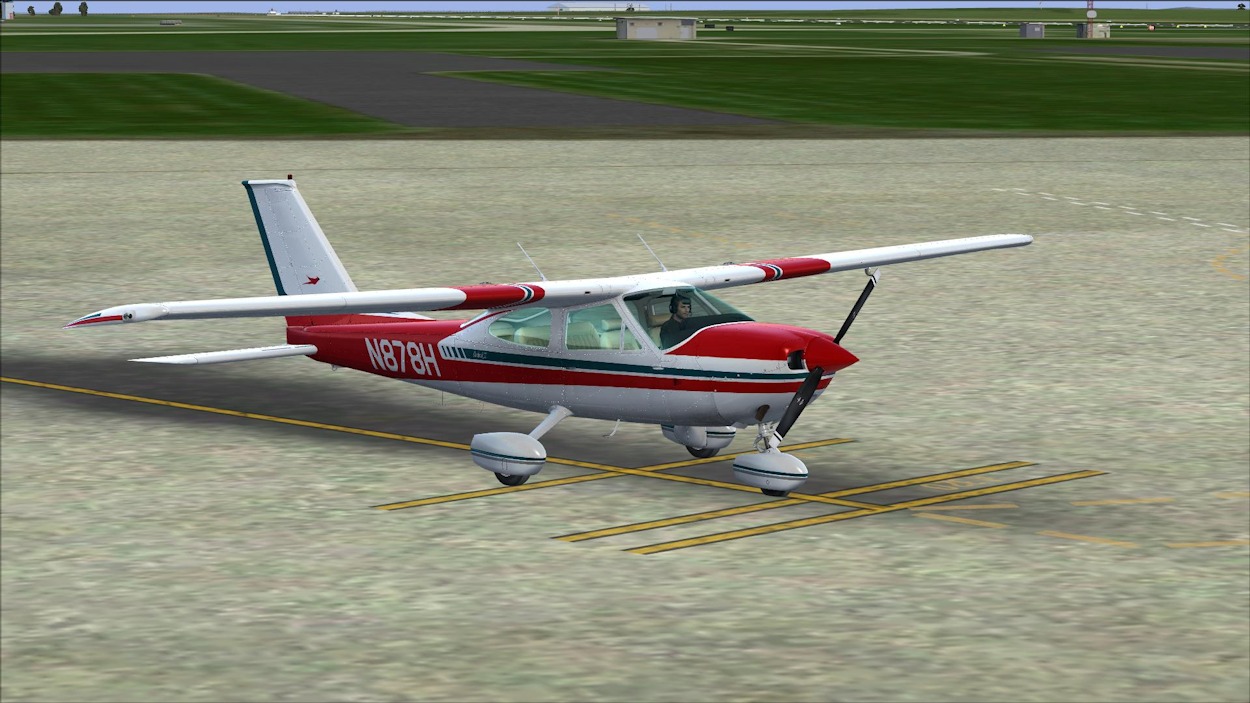
Paint Scheme 1 |
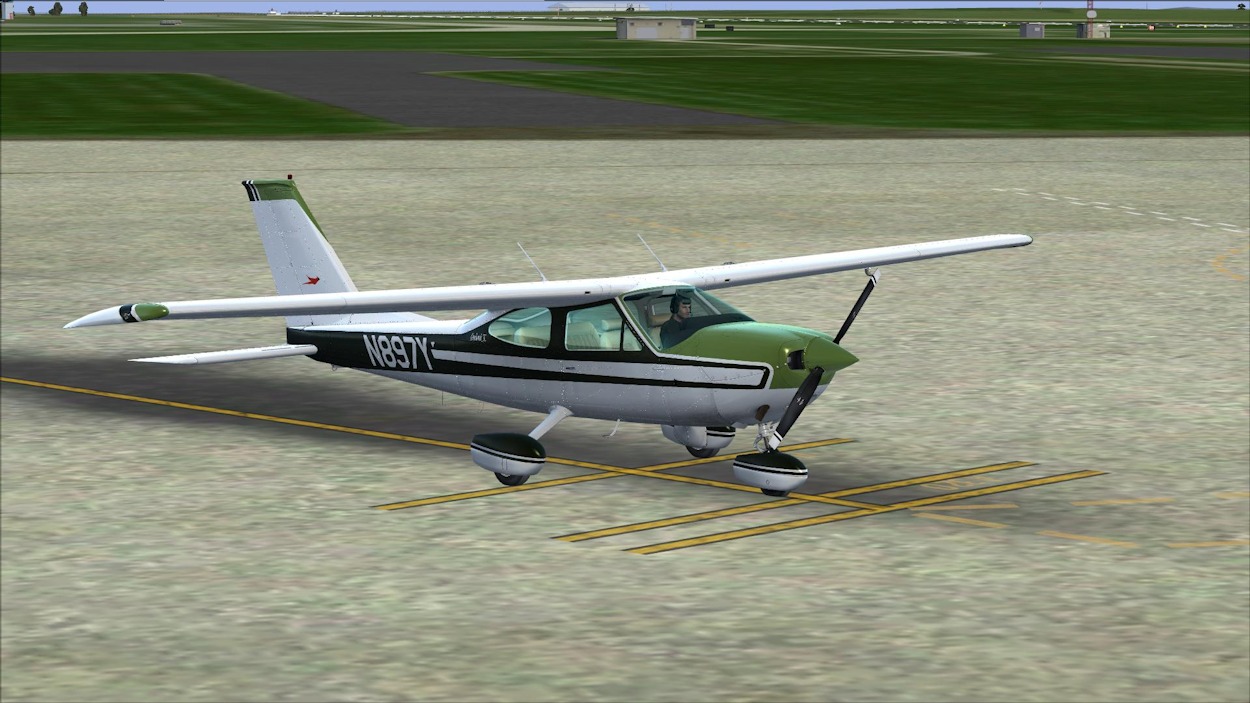
Paint Scheme 2 |

Paint Scheme 3 |
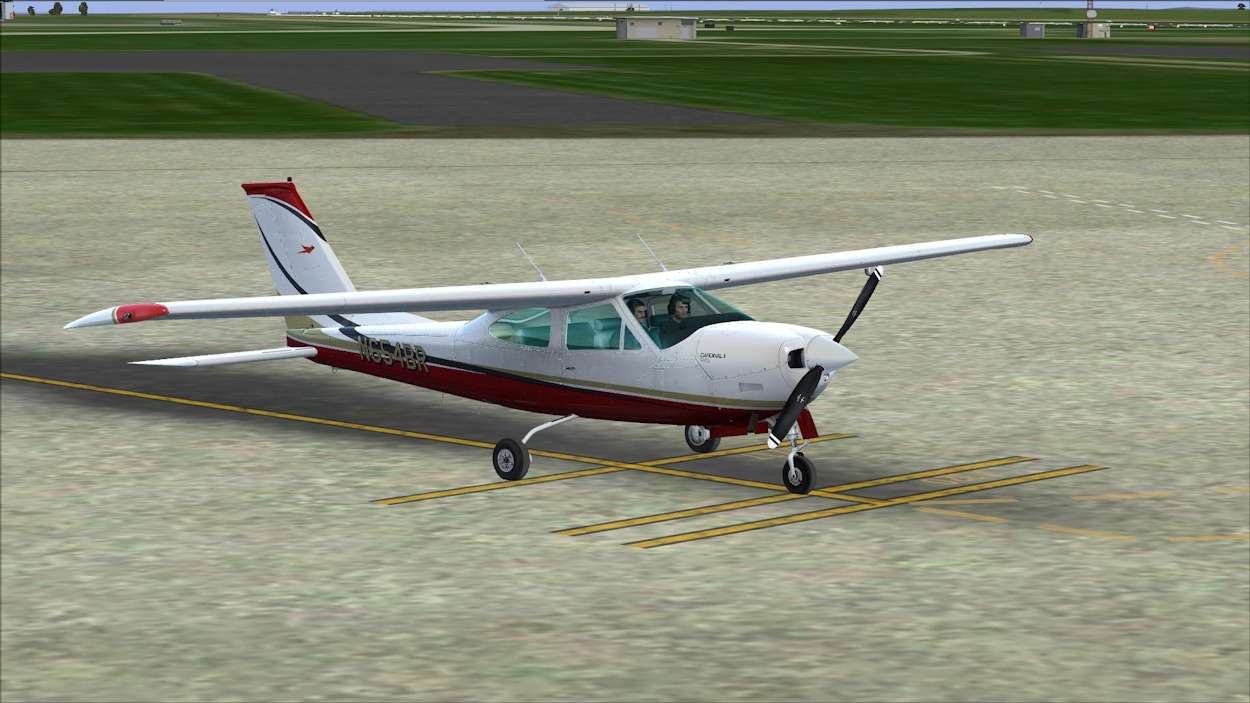
Paint Scheme 4 |
The exterior modelling accuracy of the Cessna 177 'Cardinal II' is excellent. It displays a very high level of detail which includes wheel fairings, individual fuselage panels and panel rivets, access panels, aerials and antenna, fuel tank caps, tie down points, and exhaust and oil stains on the underside of the fuselage, which add to the overall realistic appearance.

External General View |
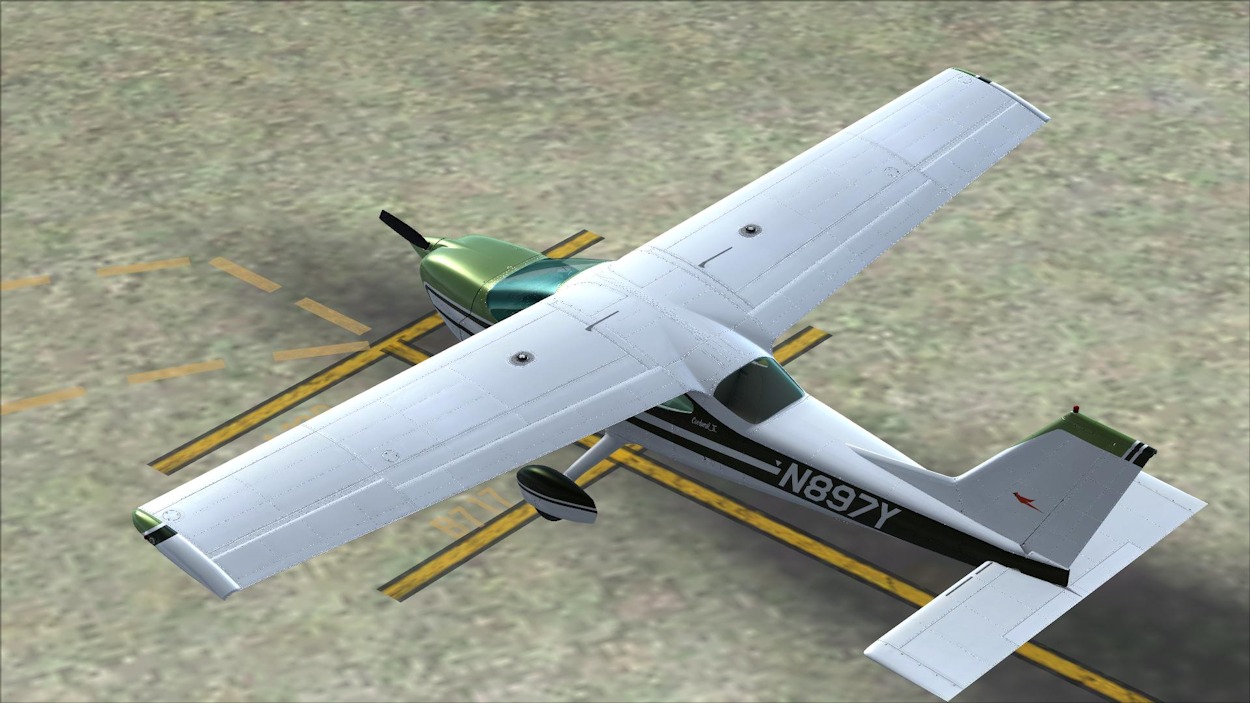
External Top View |
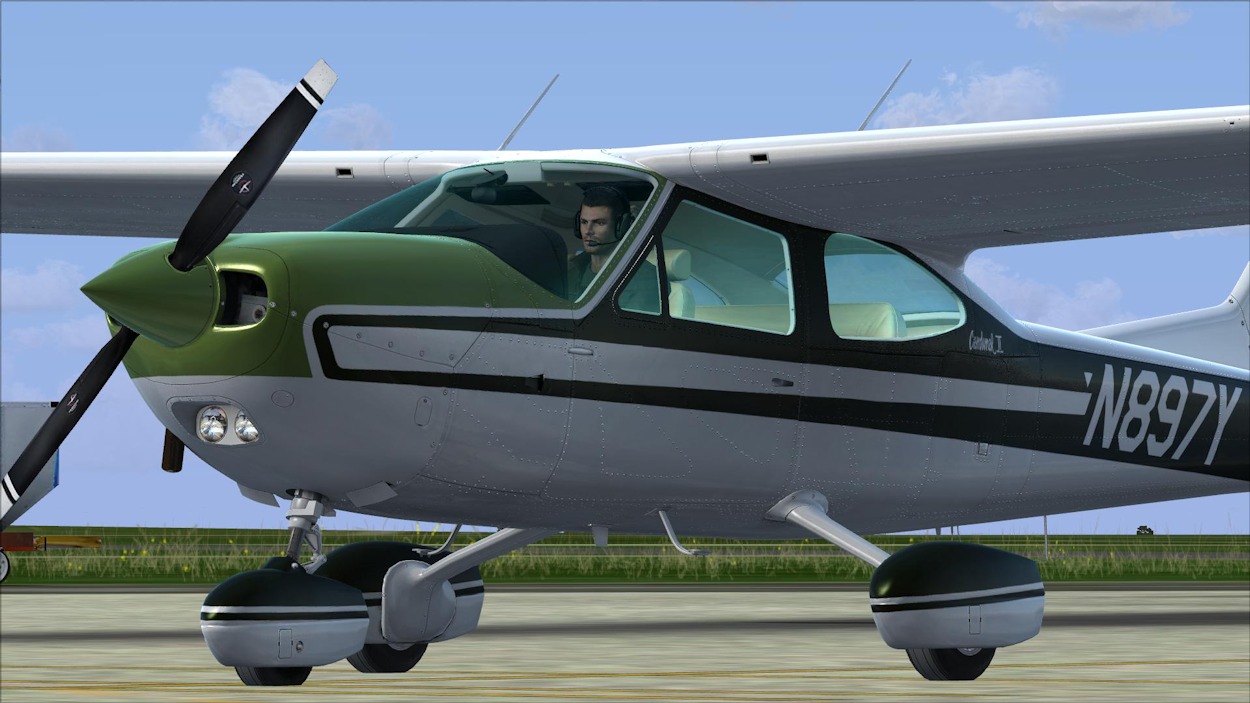
Great Detail |
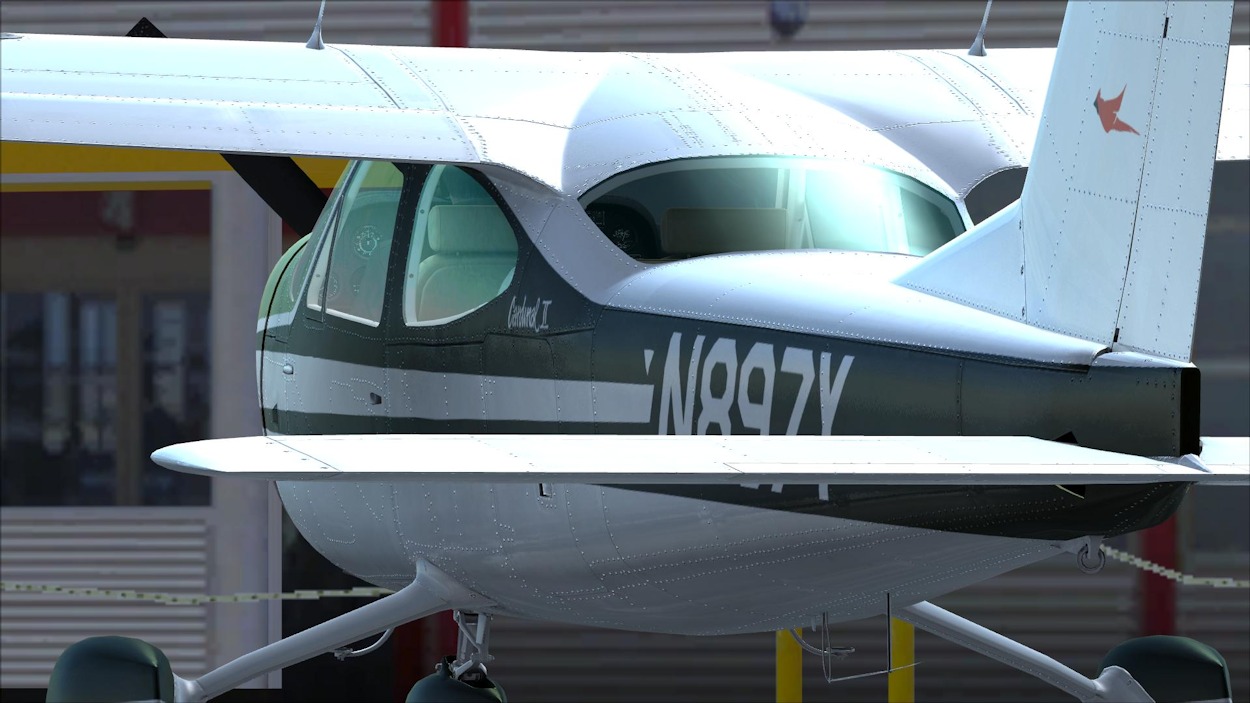
Meticulous - Note the Cardinal Logo |
Alabeo’s rendering of the cockpit of the Cessna 177 'Cardinal II' is very good and reasonably realistic when compared to real world layouts. The first thing you will notice, compared to other Cessna models of a similar design, is the totally different and much improved perspective afforded by the steeply raked windshield and more aft mounted wing.
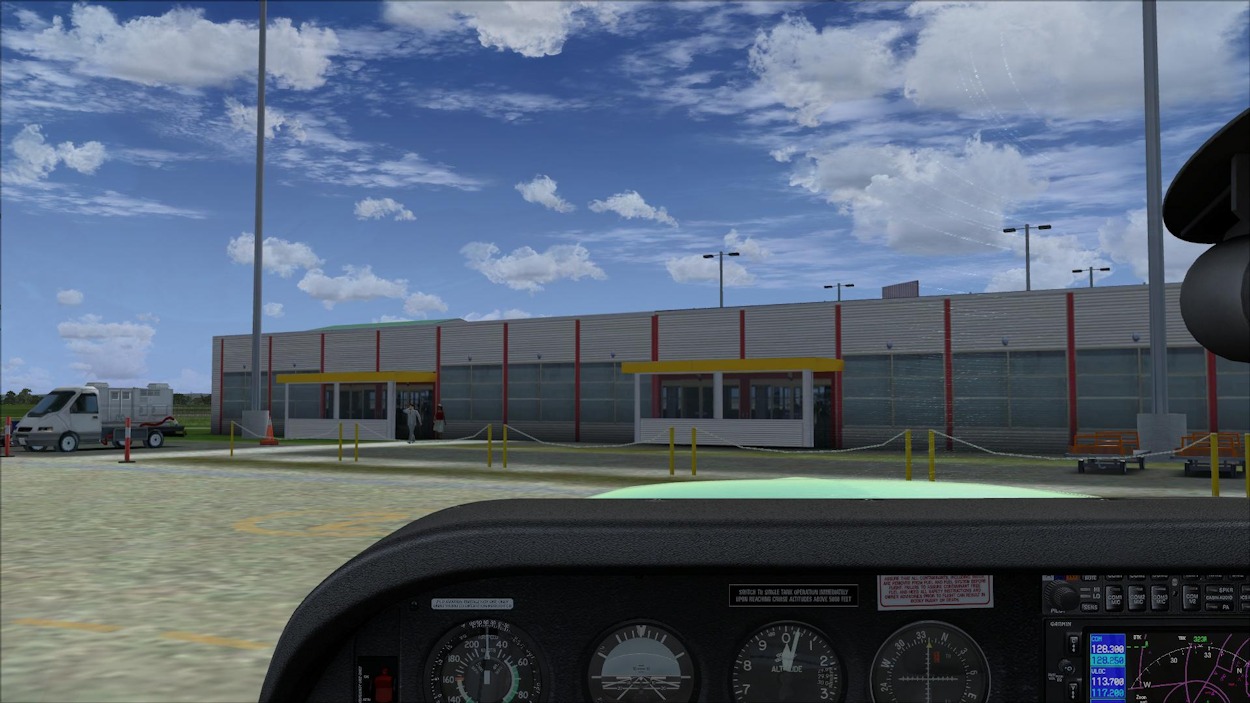
Virtual Cockpit View |
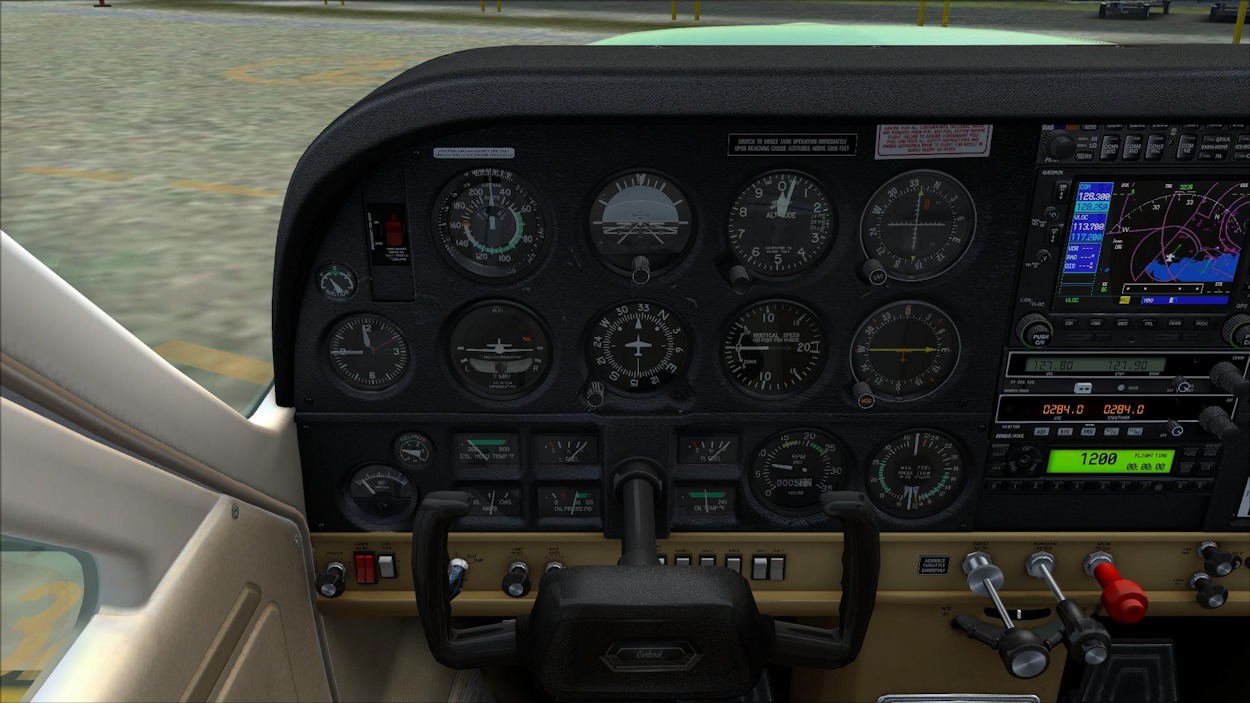
Pilot Panel |
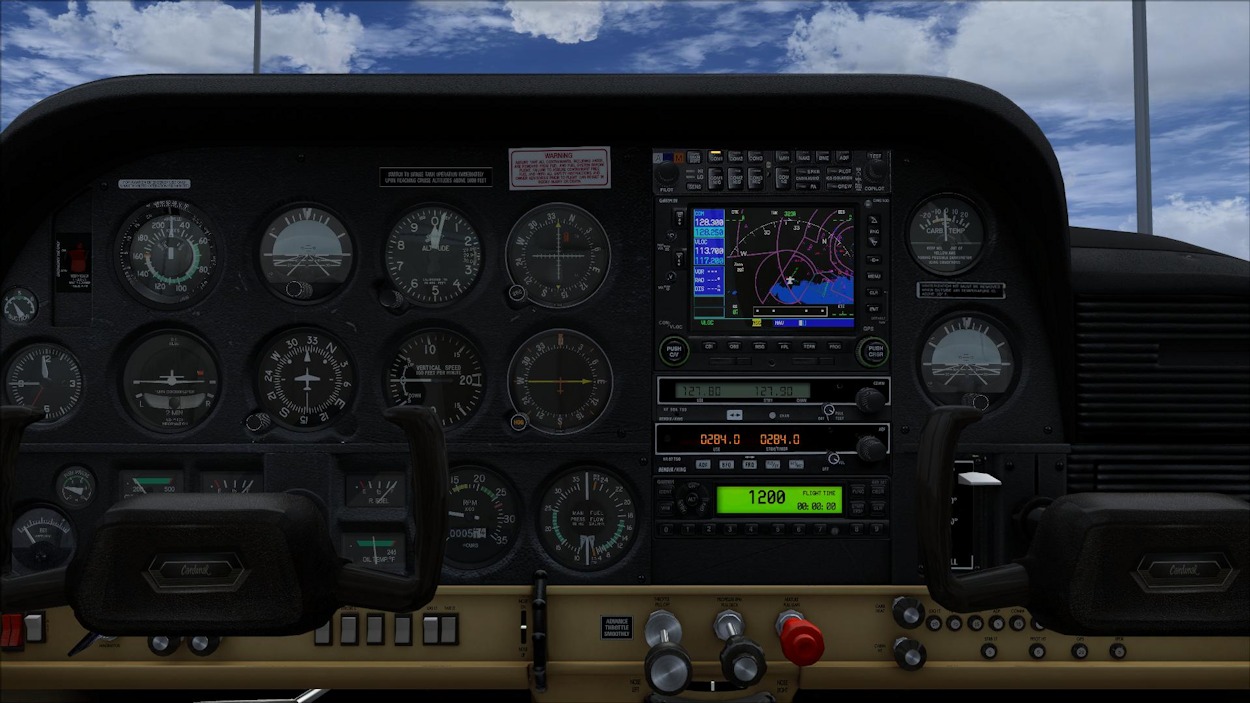
Centre Panel |
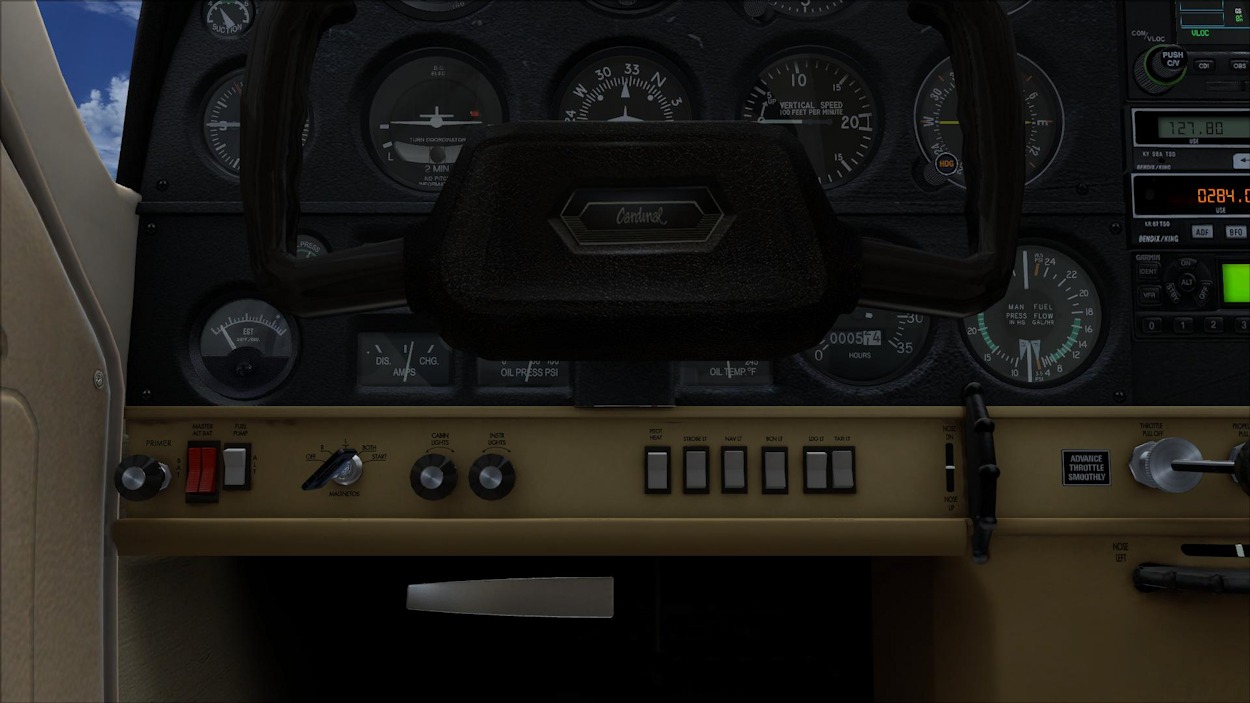
Panel Switches |
Overall, the attention to detail on the interior is, again, of a reasonably high quality.
Animations
The animations of the primary and secondary control surfaces and other moving elements on Alabeo's Cessna 177 'Cardinal II' are all modelled faithfully. On the 177RG variant, the retractable main landing gear displays the peculiar operation involving a multi stage retraction and deployment where it initially moves to a ‘dangling’ position and pauses before it begins a rearward movement to retract into the gear wells and the reverse during deployment.
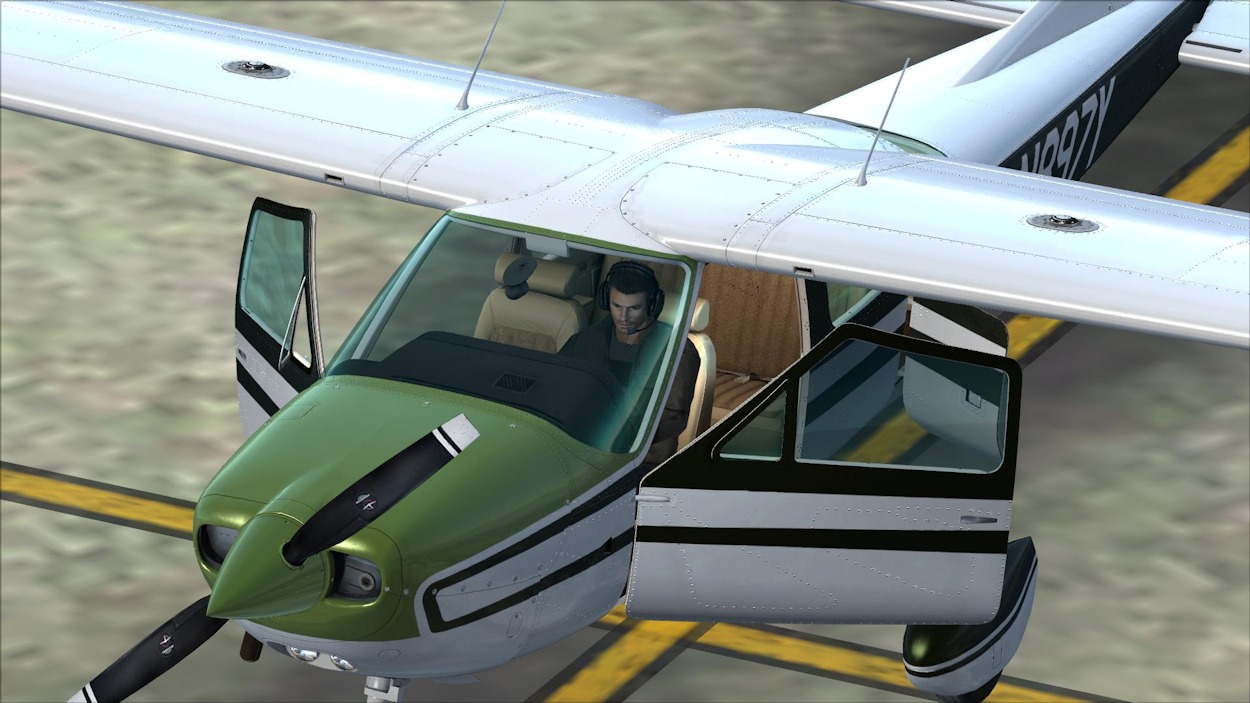
Doors & Windows |
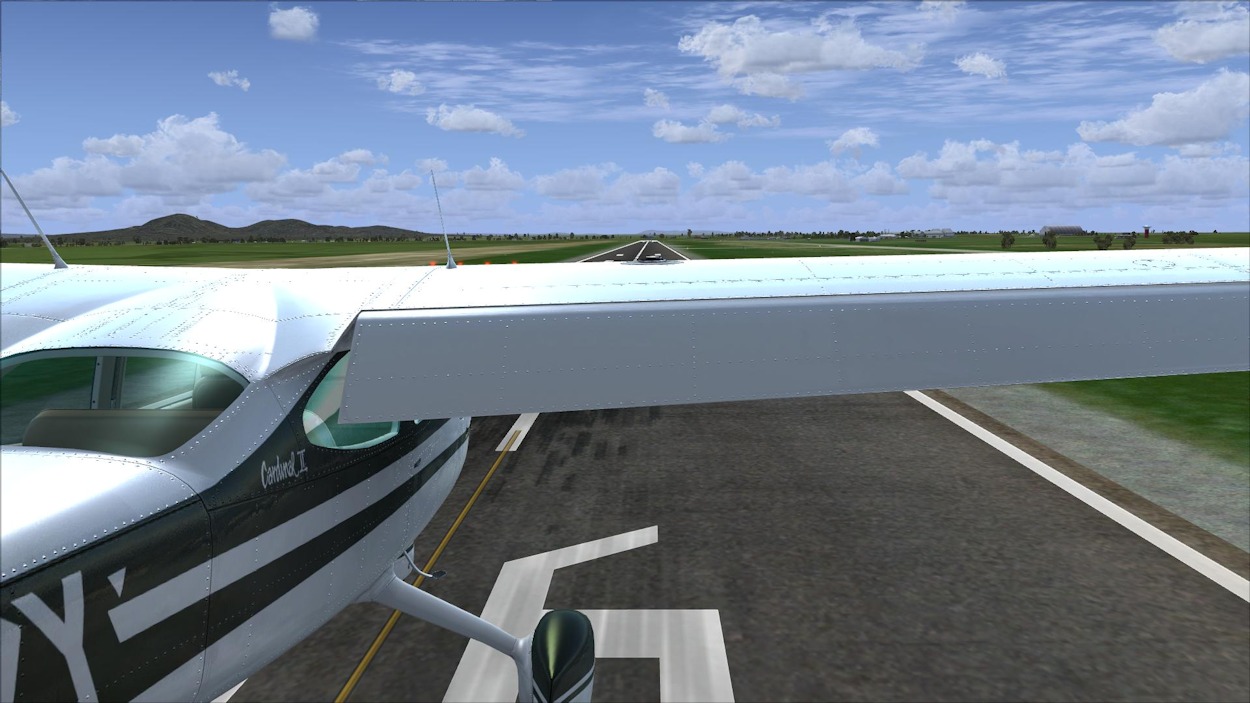
Flaps |
● primary control surfaces – ailerons, elevators and rudder;
● secondary control surfaces – flaps;
● others – retractable gear, stabilator and rudder trim tabs, rolling wheels, pilot and passenger door open / close,
baggage access door open / close, windows open / close, sun visors; and
● pilot head movement.
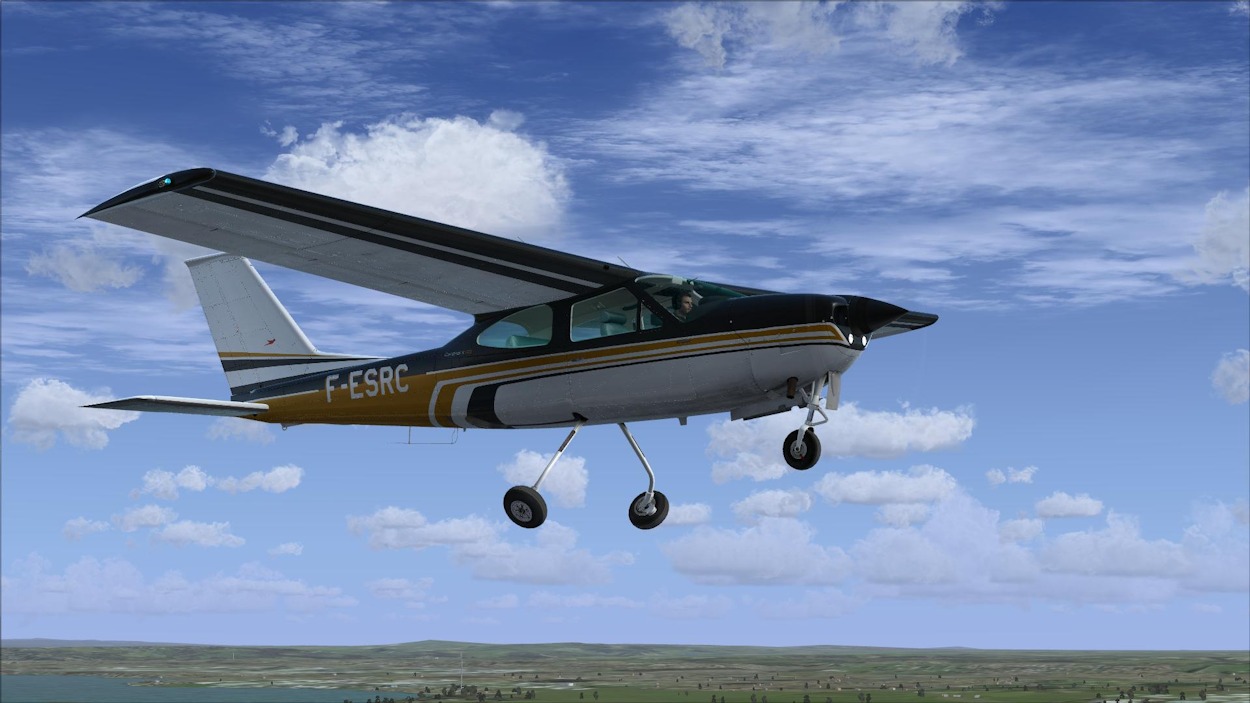
Retracting Gear 1 |
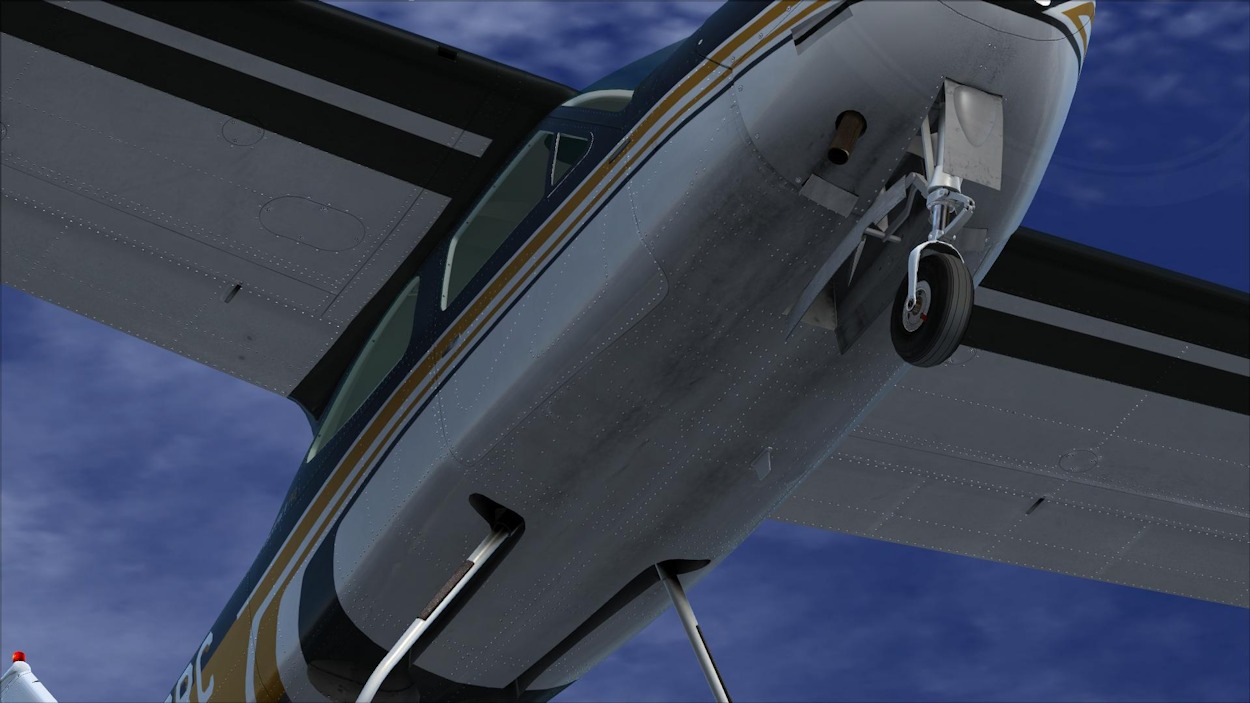
Retracting Gear 2 |
Alabeo have done a credible job on the lighting and lighting effects on the Cessna 177 'Cardinal II' and they provide a good, realistic representation of the real world aircraft. There is the usual navigation lights, rotating beacon, strobe lights, taxi and landing light, and panel and cabin interior lighting. Other than the taxi, and landing lights illuminating the ground effectively, the strobe lights also provide this illuminating effect. The detailed night light effects for the instrument panel and the cockpit, generally, are very good and replicate the night lighting seen in photographs of real world aircraft and all interior lighting effects can be seen when viewing the aircraft from an external view.
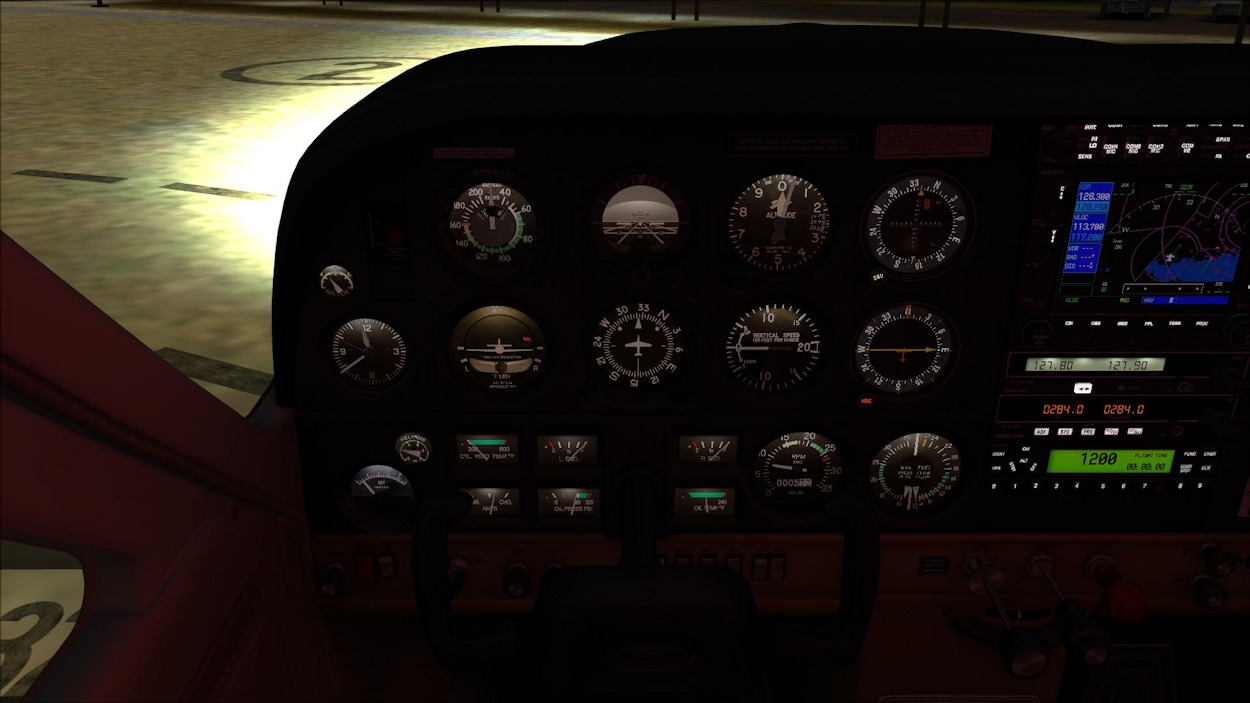
Instrument Lighting 1 |

Instrument Lighting 2 |
The sounds on Alabeo's Cessna 177 'Cardinal II', are reasonably realistic and representative of the real world aircraft. The engine exhibits a throaty rumble on start up before settling into a steady burble sound during idle. As the throttle is increased for take-off, the engine quickly adopts a strong steady 'thrum' which then settles to a 'humming' sound as the aircraft is configured at cruise. The engine sounds are not as pronounced on the 177B variant, however, this is considered due to the less powerful engine.
The sounds associated with the gear and flaps during their respective deployment and retraction phases are also realistic. Other generic sounds include switch sounds and sounds associated with the doors opening and closing.
General Characteristics and Performance Specifications
The general characteristics and performance specifications for the Cessna 177 'Cardinal II' are provided in the table. This is based on data from the respective, official Cessna 177 'Cardinal II' variant Pilot Operating Handbooks, data provided by Alabeo, and general research sources. Some of this data varies between sources and also may be an approximation due to variances in data and the specific aircraft modelled by Alabeo. It was noted that the fuel capacity for the 177RG variant, as per the Cessna Pilot Operating Handbook, is 60 US gal, whereas Alabeo have only modelled 50 US gal.
 |
A specific series of Test Flights were conducted from Avalon (YMAV) to Grafton (YGFN) to test the flight performance of both variants of Alabeo's Cessna 177 'Cardinal II'. The flights were conducted in clear weather with a full fuel load and the respective aircraft at their maximum take-off weight (MTOW). A cruise altitude of 7,500 ft was adopted and the route distance was approximately 650 nm. The route was particularly chosen to provide a basis upon which to test the range characteristics of the 177 'Cardinal II'. Like most aircraft of this type, adjustments must be made to fuel / pax loading to remain within the MTOW limitations.
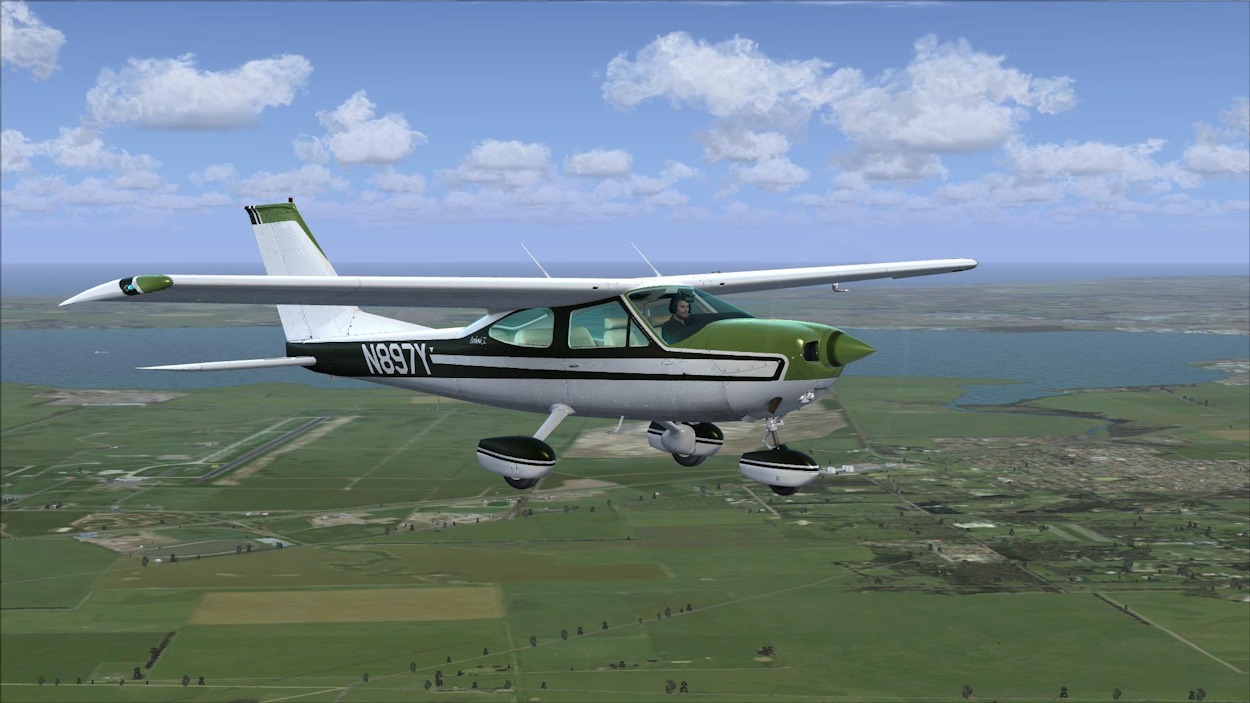
In Flight 1 |
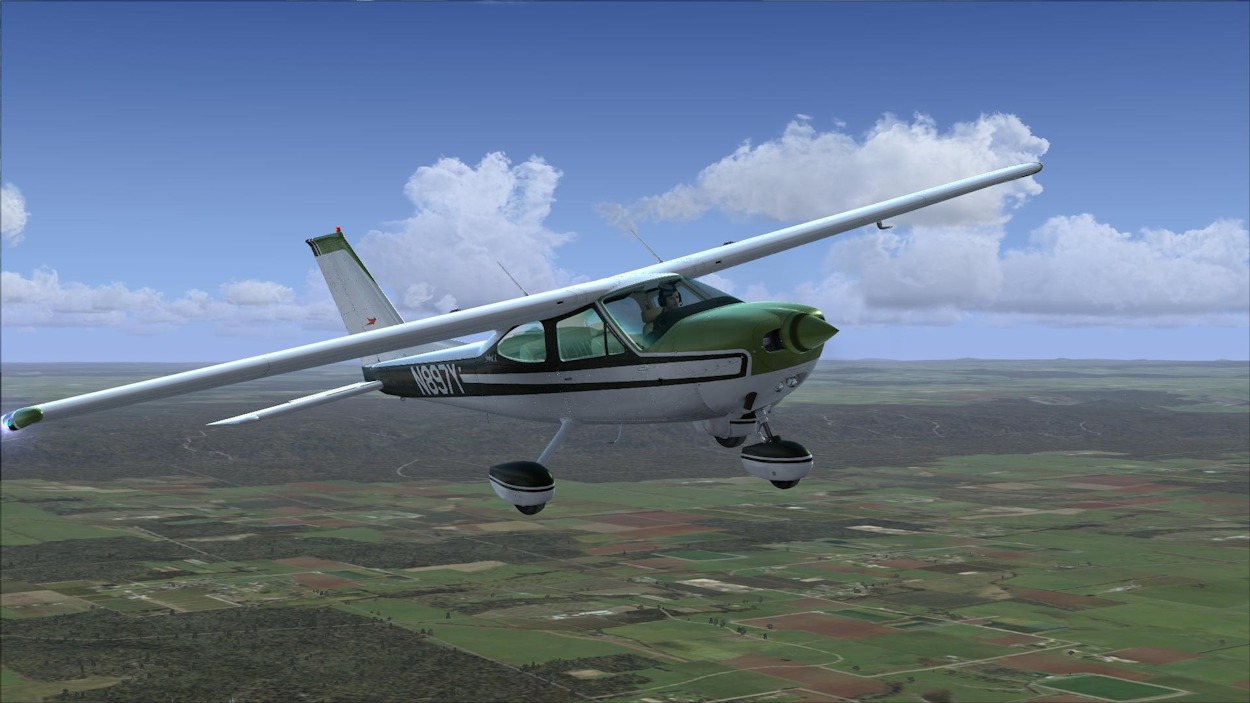
In Flight 2 |
For the 177RG, and again as per the Flight Performance tables, during cruise, a 75% power setting was established with a manifold pressure setting of 22.0 inHg and an rpm setting of 2500 rpm. The mixture setting was leaned out to produce a fuel flow rate of approximately 10.0 gph. These cruise settings produced an average speed of approximately 149 KTAS and an endurance consistent with the range characteristics of the aircraft. The Test Flight confirms the modelling of the 177RG for cruise speed and range performance to be reasonably accurate.
The Test Flights confirm the modelling of both aircraft variants for range performance to be reasonably accurate. The detected variance in the speed on the 177B variant, whilst significant, does not significantly impact the range performance of the aircraft. Based on the Test Flights and data from the official Cessna 177 'Cardinal' Pilot Operating Handbooks, it appears the data in the Alabeo Flight Performance tables for the 177B variant is incorrect.

Dirt & Grime |
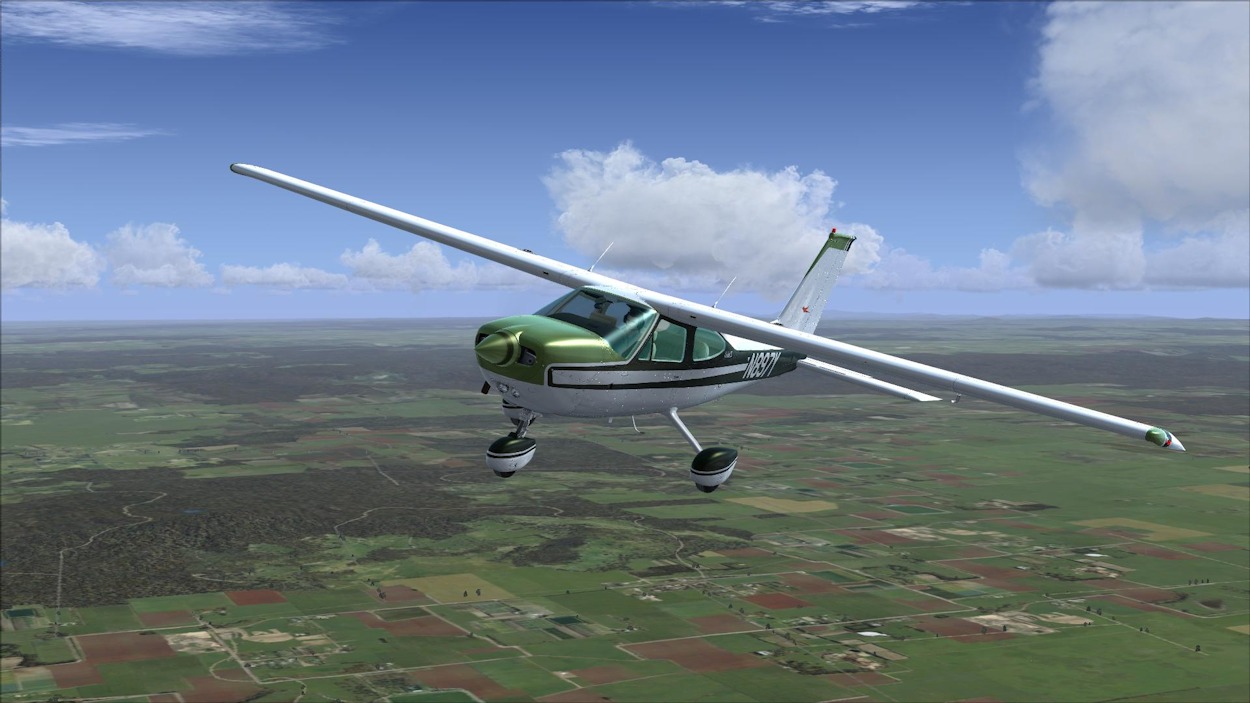
In Flight 3 |
In testing the accuracy of the instruments, based on the measured Test Flight, the speed indications on the airspeed indicator, were consistent with the averages measured. Additionally, when establishing a set rate of climb on the vertical speed indicator, the respective gain in altitude on the altimeter was achieved within the measured minute, and a standard rate turn was achieved within the measured two minute period using the turn coordinator.
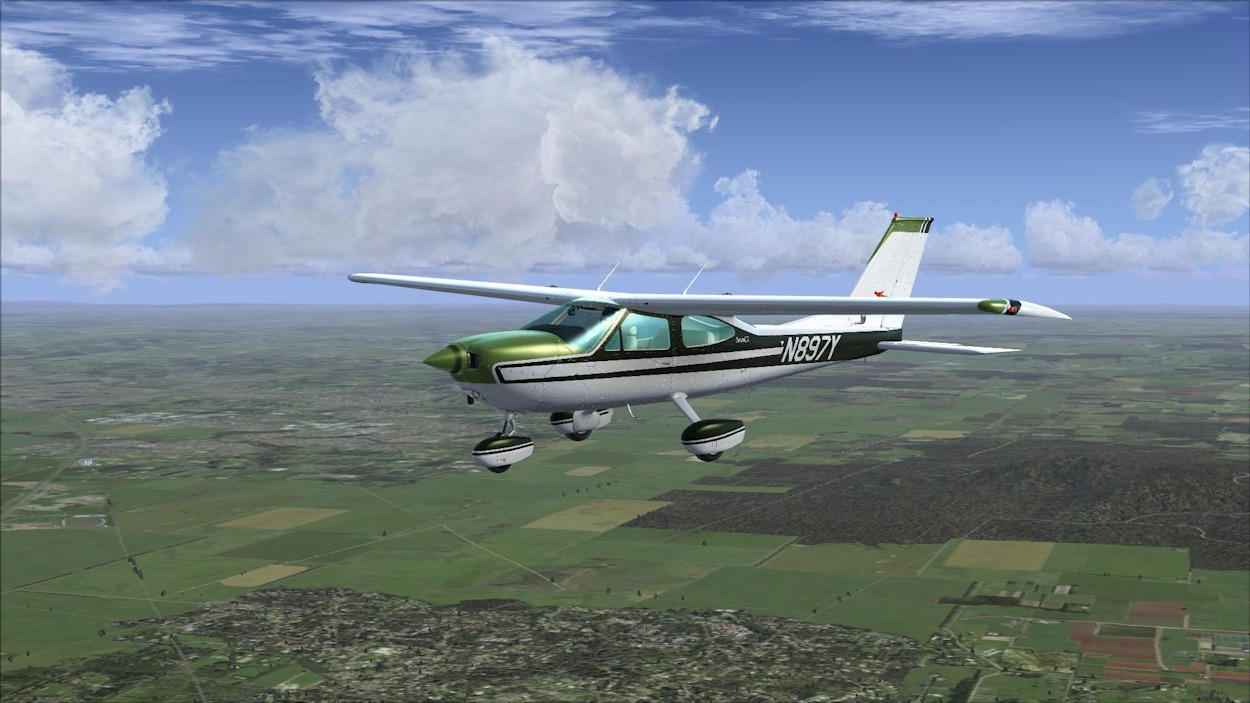
In Flight 4 |
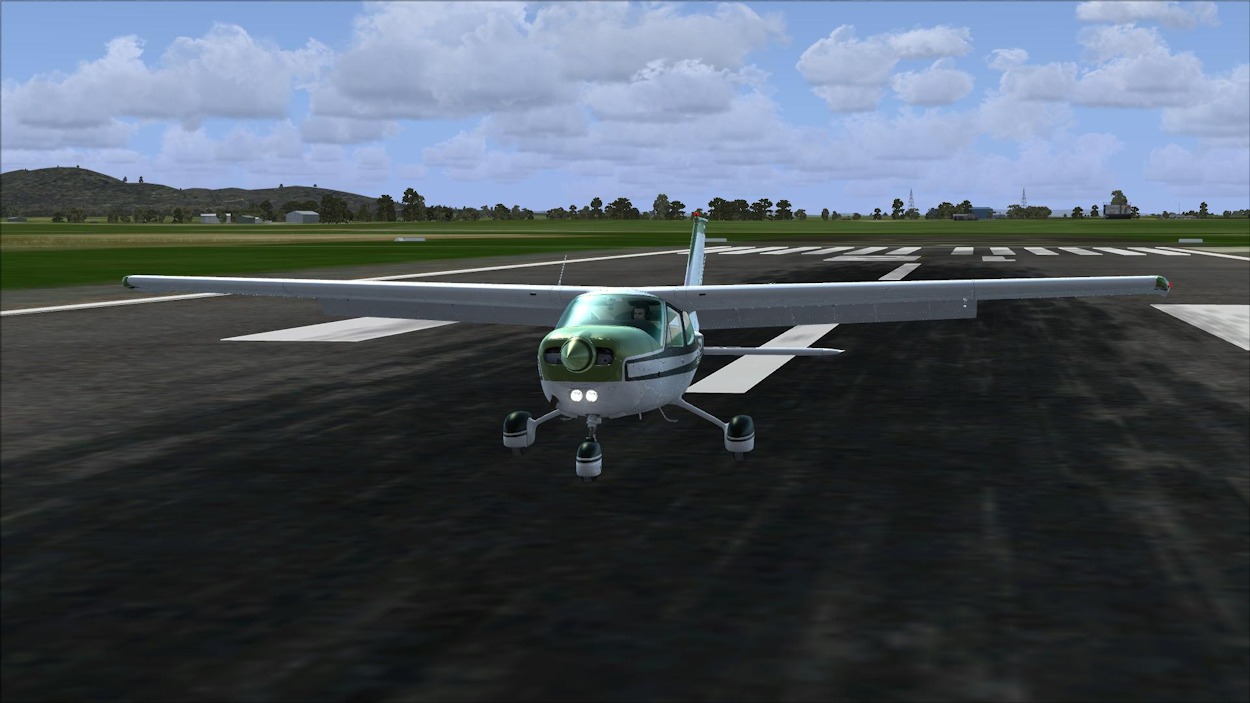
Landing Roll Out |
Documentation
There are four manuals / documents provided in Adobe Acrobat format (.pdf) for each variant of the Cessna 177 'Cardinal II' (eight in total):
● Normal Procedures – this manual provides the procedures for the normal operation of the aircraft;
● Emergency Procedures – this manual provides the emergency procedures for the aircraft;
● Performance Tables – this document details the operating cruise performance specifications of the aircraft; and
● Reference – this document details the performance specifications of the aircraft.
Value for Money
On a value for money assessment, the Alabeo Cessna 177 'Cardinal II' is considered exceptional. With two variants included, it is very detailed in its modelling and is a fantastic general aviation aircraft to fly.
Simulator Performance
The aircraft model performed excellently within the existing settings I have in FSX. I have most of my settings set very high and there was no need to make any adjustments. FSX continued to perform smoothly and as it would with any default aircraft.
Technical Requirements
This version of the Alabeo Cruz PiperSport is for FSX / P3D only. Other specified technical requirements are as follows:
● Windows Vista, Windows 7, or Windows 8 (32 or 64bit);
● Microsoft Flight Simulator FSX with SP1 and SP2 (or Acceleration Pack) or Lockheed Martin Prepar3d Flight Simulator installed; and
● Pentium V, 2GHz or similar, 2GB RAM, 512MB graphics card, and 435MB available HDD space.
Review Computer Specifications
The specifications of the computer on which the review was conducted are as follows:
● Intel i7 990X Extreme 3.46GHz;
● NVidia GTX580, 1536MB graphics;
● 12GB Kingston DDR3 2000MHz;
● Windows 7, (64bit);
● Microsoft Flight Simulator FSX Acceleration; and
● additional major add-ons include: Active Sky Next, REX Essential Plus Overdrive; Ultimate Traffic 2; Orbx FTX Global BASE;
Orbx FTX Global VECTOR; Orbx FTX Global openLC EU; Orbx FTX region series; and Orbx FTX airport series.
Conclusion
The Cessna 177 'Cardinal II' is another great general aviation aircraft from the Cessna and Alabeo stables. This review has involved over 25 hours of specific flight testing flying hours and it is evident Alabeo have delivered an aircraft in the Cessna 177 'Cardinal II' which is rich in detail and accuracy and is a pleasure to fly. The Cessna 177 'Cardinal II' displays an excellent balance of quality and detail at an exceptional price. If you are a general aviation and / or Cessna fan in particular, you will enjoy the Alabeo Cessna 177 'Cardinal II'.
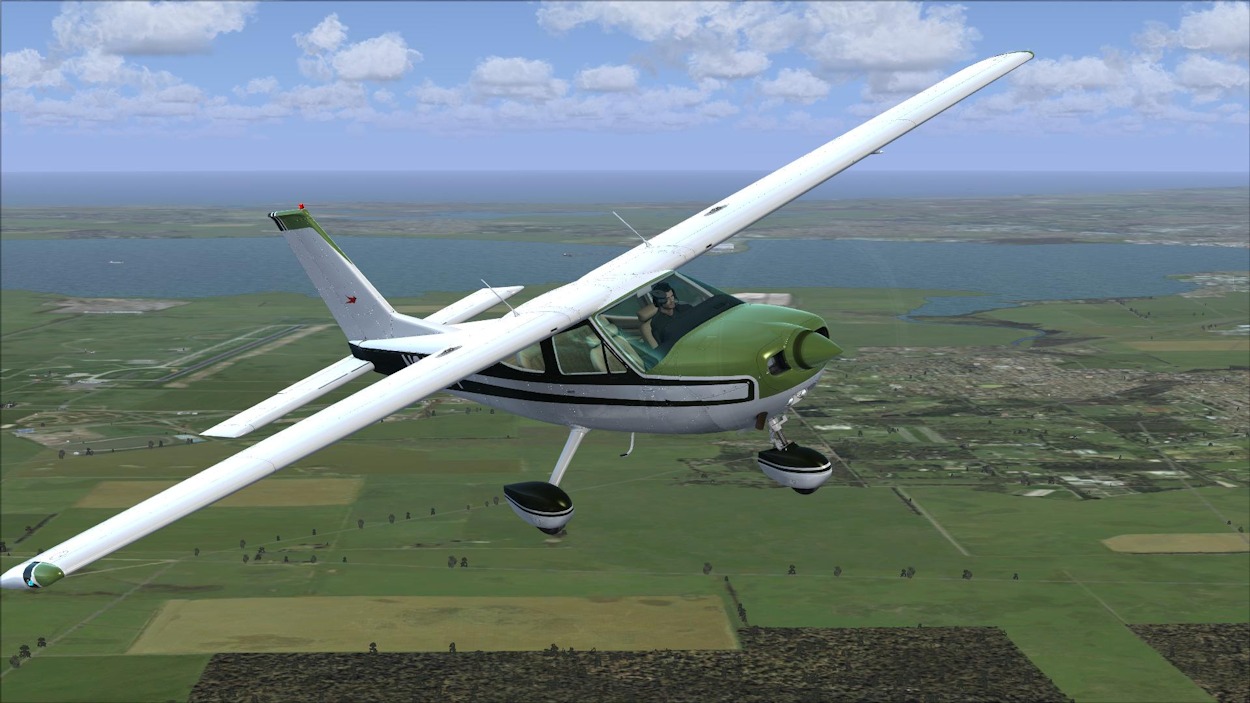
A Delight to Fly |
The Cessna 177 'Cardinal II' is an excellent product from Alabeo which displays a high quality and attention to detail and represents exceptional overall value for money.
Pros:
Quality and attention to detail.
Realistic modelling and performance.
Excellent documentation.
Exceptional value for money.
Cons:
A variance in speed flight performance on the 177B.
| Scores: |
 | |
| ● External Model: | 9.5/10 | |
| ● Internal Model: | 9.5/10 | |
| ● Sounds: | 9.5/10 | |
| ● Flight Characteristics (does it fly by the numbers): | 9.0/10 | |
| ● Flight Dynamics (does it feel like what it looks like): | 10/10 | |
| ● Documentation: | 9.5/10 | |
| ● Value for Money: | 10/10 |
The Alabeo Cessna 177 'Cardinal II' is awarded an overall Mutley’s Hangar score of 9.6/10, with an "Outstanding" and a Mutley's Hangar Gold Award. |